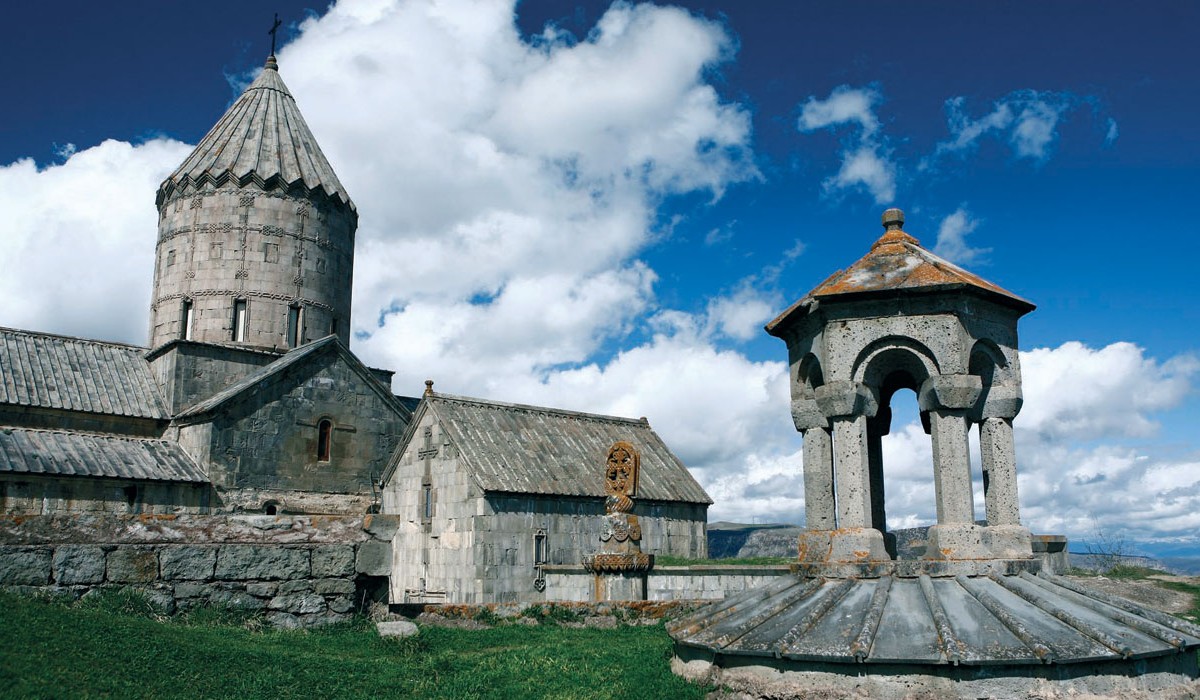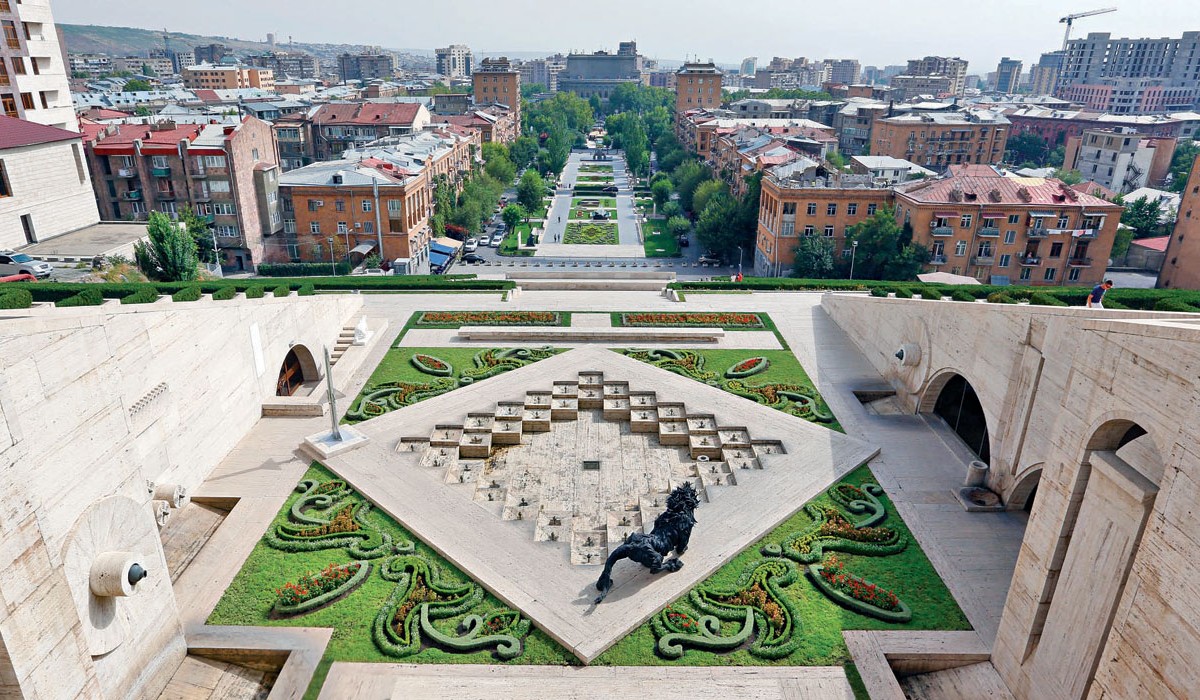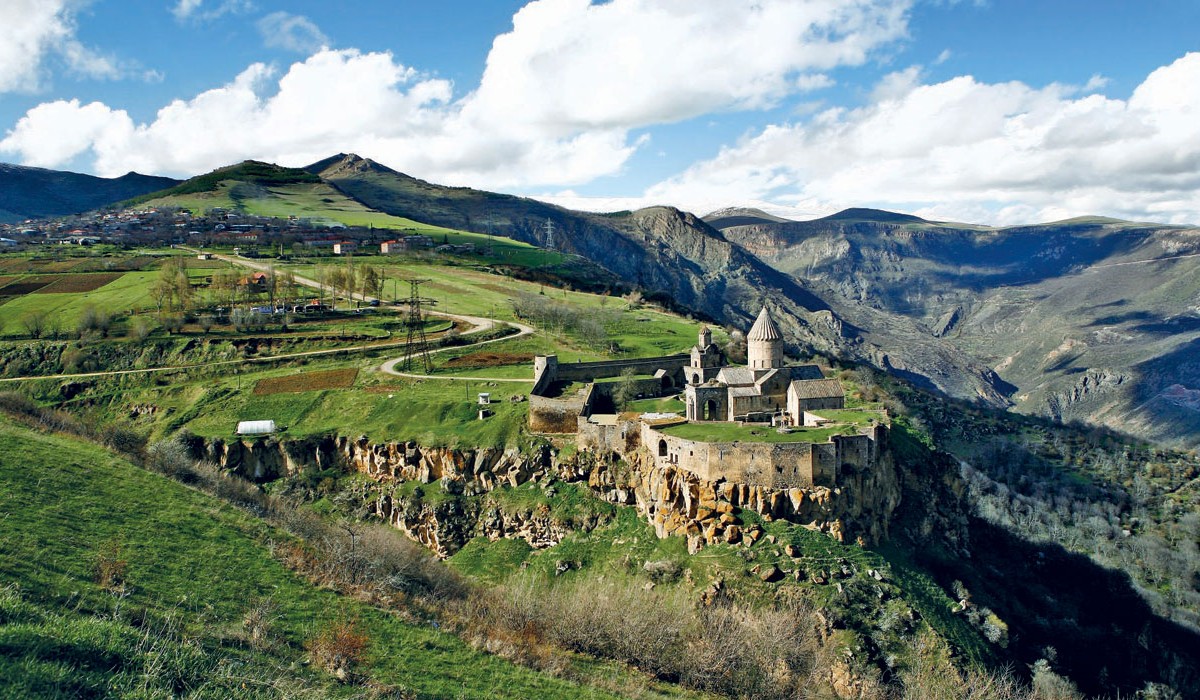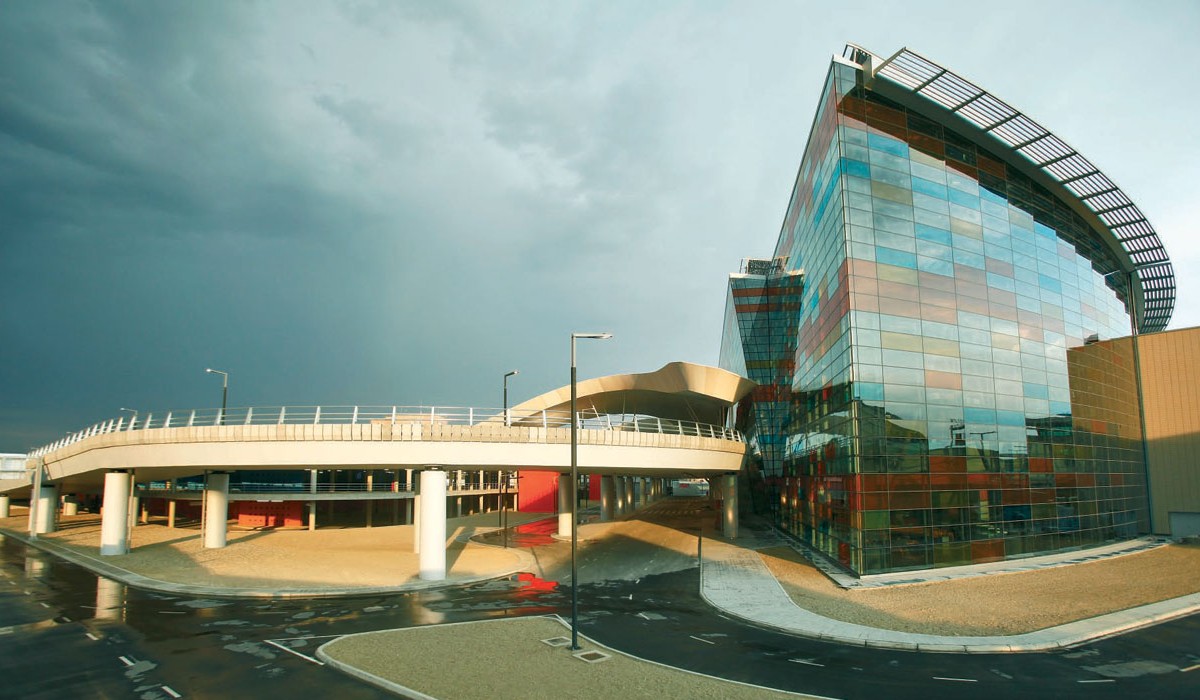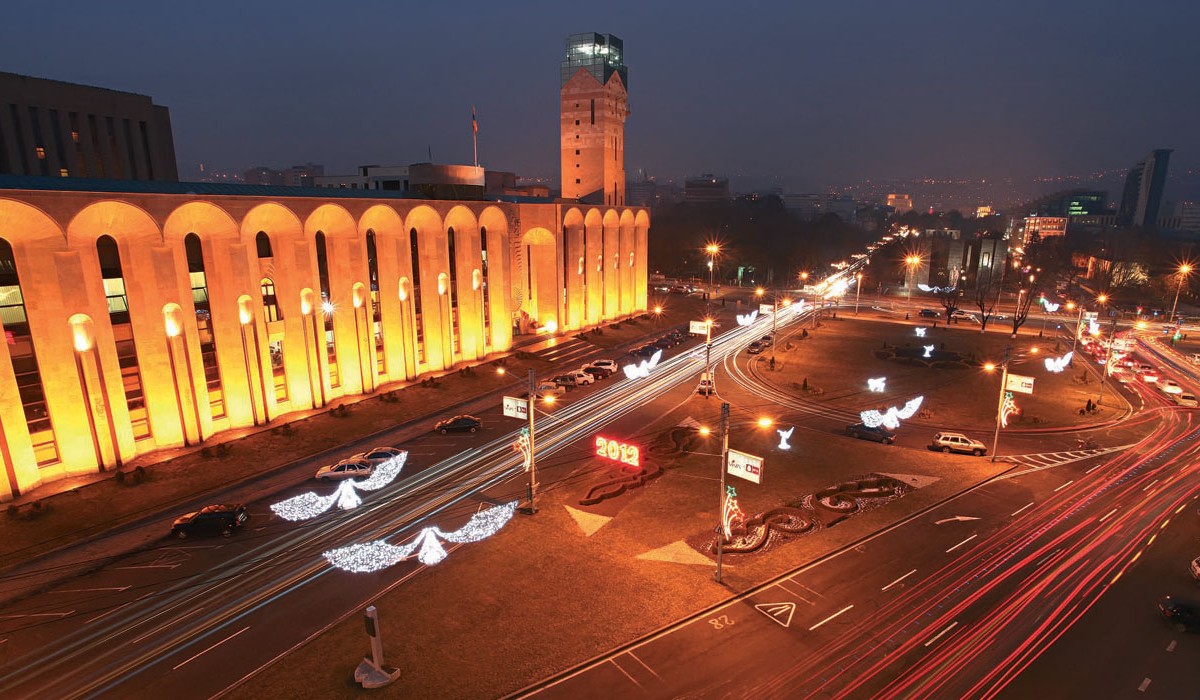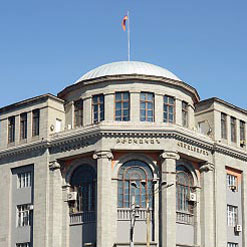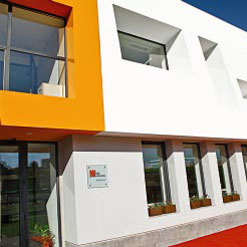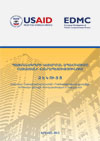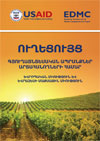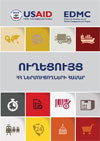Health Care System
Health Care System
 Armenia’s health care system features three principal components: the national or “republican” service level, which provides tertiary care hospitals and an epidemiological service; the regional service level, which provides hospitals; and the municipal and community service level, which has primary health care providers. The key components of the system are the large private hospitals. Socially vulnerable and special-status social groups are provided with Medicare, including services for the disabled, children under 18 without parental care, victims of political repression, military personnel, expectant mothers, victims of traffcking, and children under age seven, among other groups. These groups also receive free or discounted medicine.The system is undergoing constant improvement and refnement. Heart surgery, therapy, dentistry and other medical specialties are currently being improved in the country. Implementation of a mandatory medical insurance system began in 2012, which will further boost the development of the healthcare system. During the frst stage of the new system, public offcials will receive insurance as part of a social package provided by the government.
Armenia’s health care system features three principal components: the national or “republican” service level, which provides tertiary care hospitals and an epidemiological service; the regional service level, which provides hospitals; and the municipal and community service level, which has primary health care providers. The key components of the system are the large private hospitals. Socially vulnerable and special-status social groups are provided with Medicare, including services for the disabled, children under 18 without parental care, victims of political repression, military personnel, expectant mothers, victims of traffcking, and children under age seven, among other groups. These groups also receive free or discounted medicine.The system is undergoing constant improvement and refnement. Heart surgery, therapy, dentistry and other medical specialties are currently being improved in the country. Implementation of a mandatory medical insurance system began in 2012, which will further boost the development of the healthcare system. During the frst stage of the new system, public offcials will receive insurance as part of a social package provided by the government.
Armenia’s health system has witnessed several notable recent success stories
- The Nork Marash Cardiology Center has become a leading international center for cardio surgery, attracting many patients from CIS and Middle East countries. International assistance (particularly with the involvement of the Armenian Diaspora) and exchanges signifcantly contribute to the upgrading of skills and introduction of new treatment methods.
- Yerevan Medical University trains the largest number of international students in Armenia. Relatively affordable prices and highly-qualifed professionals represent a comparative advantage of the Armenian health care sector, and Armenia has considerable potential to become the leading health care provider in the region.
Table 2. Armenia: Health care system statistics
| Number of physicians of all specialities | 13,591 |
| Number of hospital facilities | 130 |
| Number of ambulatory-policlinic facilities | 504 |
| Number of medium-level medical personnel | 18,649 |
| Number of hospital beds (thousand) | 12.2 |
| Physicians density | 4.02 physicians/1,000 population |
| Hospital bed density | 3.7 beds/1,000 population |
Source: Health Information-Analytic Center NIH MOH RA, Annual Statistical Report 2010
Social safety network and social protection system
Social safety network and social protection system
LABOUR CODE
 Armenia is a full member of the International Labour Organization. The Labour Code complies with international standards and assures the protection of employer and employee rights, and is constantly updated to refect dynamic developments in the world. The Labour Code precludes discrimination of any kind. Workers from the age of 16, and in certain cases from the age of 14, receive full legal rights and protections. The retirement age is 63. Armenian law does not prescribe the composition of labour force employed either by Armenian or foreign companies. The most important social insurance benefts are pensions, unemployment insurance coverage, maternity coverage, and childcare benefts for children under two years old.
Armenia is a full member of the International Labour Organization. The Labour Code complies with international standards and assures the protection of employer and employee rights, and is constantly updated to refect dynamic developments in the world. The Labour Code precludes discrimination of any kind. Workers from the age of 16, and in certain cases from the age of 14, receive full legal rights and protections. The retirement age is 63. Armenian law does not prescribe the composition of labour force employed either by Armenian or foreign companies. The most important social insurance benefts are pensions, unemployment insurance coverage, maternity coverage, and childcare benefts for children under two years old.
Employment contracts may be open-ended or fxed-term. Employees may terminate the employment relationship at any time by giving early notice. The Labour Code permits employers to terminate employment relationships for such reasons as reorganization, unsuitability of the employee for the position held (from two weeks to two months notice is required depending on employee’s length of service), unsatisfactory results during a probation period, failure to adequately perform duties, and loss of trust. However, care must be taken to ensure that all necessary procedures are properly followed and documented.
However, care must be taken to ensure that all necessary procedures are properly followed and documented.
An employment contract with a pregnant woman may not be terminated from the day on which the employer receives a medical certifcate confrming pregnancy through one month after her maternity leave concludes. Paid maternity leave is required for between 140 and 180 days, depending on the nature of the child delivery. Payment is funded by the Social Security Fund. A mother may also take extended unpaid leave until her child is three years old. Her position must be kept open during this period.
An employee's minimum annual holiday entitlement is 20 working days for those with a fve-day working week and 24 working days for those with a six-day working week. Vacation pay should be paid at least three calendar days before the vacation starts, otherwise the employer will be obliged to provide additional paid vacation leave. Employees who are engaged in part-time studies may be entitled to additional vacation leave.
HUMAN CAPITAL
The higher education system in Armenia consists of 27 state and 41 private higher education institutions operating in Armenia (including eight foreign ones), enrolling more than 60,000 students annually.
Human capital is regarded as the most valuable resource of the country (65% of the population is 17 to 59 years old). The literacy rate is 99.4% for the entire population (male: 99.7% female: 99.2% according to the 2001 census) and school duration (primary to secondary education) is 12 years. According to the UNDP survey of the age group from 13 to 33, over 30% have enough profciency to conduct business in English, which is the third most common language in Armenia (after Armenian and Russian).
SOCIAL SECURITY
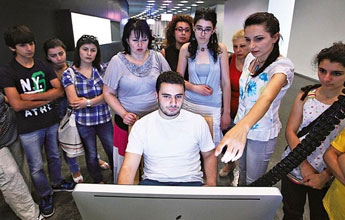 The social security system in Armenia covers pensioners, workers and their dependents for work-related accidents, disability benefts, sickness and maternity benefts, and family allowances. The social protection system of Armenia plays an important role in providing social support to the population and alleviating the poverty.The current state pension system (PAYG means pay-as you-go) of Armenia is based on the principle of inter-generational solidarity. Essentially employees, employers and sole proprietor pay obligatory social contributions to the State Budget, from which pension payments are made. This system is being improved and a multi-pillar pension system will be implemented by January 2014 as a result of the ongoing pension reforms. The existing PAYG system will be complemented by two new pillars: the mandatory and the voluntary funded components. The voluntary component will come into force in 2013 and the mandatory component will enter into force in 2014. Within the framework of the funded component, employees will make contributions from their salaries, which together with State contributions will be transferred to their pension accounts. Pension savings will be invested in eligible securities instruments according to the investment policy defned by the law regulations as well as Pension Fund rules (www.mss.am, www.epension.am, www.abcfnance.am).
The social security system in Armenia covers pensioners, workers and their dependents for work-related accidents, disability benefts, sickness and maternity benefts, and family allowances. The social protection system of Armenia plays an important role in providing social support to the population and alleviating the poverty.The current state pension system (PAYG means pay-as you-go) of Armenia is based on the principle of inter-generational solidarity. Essentially employees, employers and sole proprietor pay obligatory social contributions to the State Budget, from which pension payments are made. This system is being improved and a multi-pillar pension system will be implemented by January 2014 as a result of the ongoing pension reforms. The existing PAYG system will be complemented by two new pillars: the mandatory and the voluntary funded components. The voluntary component will come into force in 2013 and the mandatory component will enter into force in 2014. Within the framework of the funded component, employees will make contributions from their salaries, which together with State contributions will be transferred to their pension accounts. Pension savings will be invested in eligible securities instruments according to the investment policy defned by the law regulations as well as Pension Fund rules (www.mss.am, www.epension.am, www.abcfnance.am).




